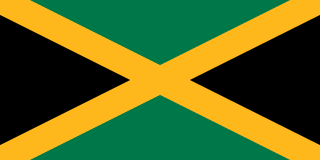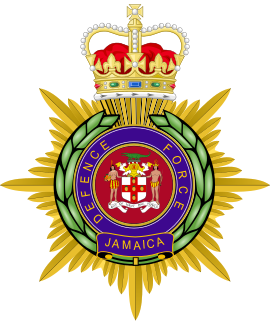The Canadian Forces Decoration is a Canadian award bestowed upon members of the Canadian Armed Forces who have completed twelve years of military service, with certain conditions. By convention, it is also given to the Governor General of Canada upon his or her appointment as viceroy, which includes the title of Commander-in-Chief in and over Canada. The decoration is awarded to all ranks, who must have a good record of conduct during the final eight years of claimed service.

The Queen Elizabeth II Golden Jubilee Medal or the Queen's Golden Jubilee Medal was a commemorative medal created in 2002 to mark the fiftieth anniversary of Elizabeth II's accession. The Queen Elizabeth II Golden Jubilee Medal was awarded in Canada to nominees who contributed to public life. The Queen's Golden Jubilee Medal was awarded to active personnel in the British Armed Forces and Emergency Personnel who had completed 5 years of qualifying service.

The Queen Elizabeth II Silver Jubilee Medal was a commemorative medal created in 1977 to mark the twenty-fifth anniversary of Elizabeth II's accession in the United Kingdom, Canada, Australia, and New Zealand. The medal was physically identical in all realms where it was awarded, save for Canada, where it contained unique elements. As an internationally distributed award, the Queen Elizabeth II Silver Jubilee Medal holds a different place in each country's order of precedence for honours.

The Queen Elizabeth II Coronation Medal is a commemorative medal instituted to celebrate the coronation of Queen Elizabeth II on 2 June 1953.

The Malaysian Service Medal is a medal given by the King and Government of Malaysia. Established 3 March 2004, the medal recognizes service by members of the Malaysian Armed Forces during the Malayan Emergency, Second Malayan Emergency, and the Indonesia–Malaysia confrontation. The medal was also offered for award to members of the Commonwealth forces from Australia, Fiji, India, Nepal, New Zealand, and the United Kingdom who served in Malaysia during the Malayan Emergency and the Indonesia–Malaysia confrontation. The award is in recognition of "distinguished chivalry, gallantry, sacrifice, or loyalty" in contributing to the freedom of independence of Malaysia. The medal can be conferred and accepted posthumously by next of kin.

The Korea Medal, sometimes referred to as the Queen's Korea Medal to distinguish it from the United Nations Service Medal, is a campaign medal created in 1951 to recognize troops from Australia, Canada, New Zealand, and the United Kingdom who had given either one day's service in an air sortie over Korea, or 28 days service offshore, during the Korean War. The medal was identical in all countries where it was awarded, except for Canada where it contained unique elements. An award distributed across the Commonwealth, the Korea Medal holds a different place in each country's order of precedence for honours.
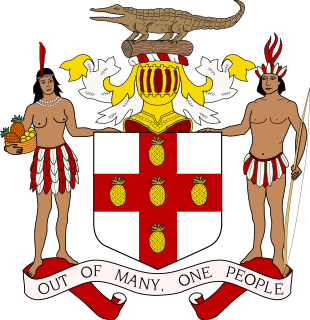
The monarchy of Jamaica is a constitutional system of government in which a hereditary monarch and head of state is the sovereign of Jamaica. The terms Crown in Right of Jamaica, Her Majesty in Right of Jamaica, or The Queen in Right of Jamaica may also be used to refer to the entire executive of the government of Jamaica. Though the Jamaican Crown has its roots in the British Crown, it has evolved to become a distinctly Jamaican institution, represented by its own unique symbols.
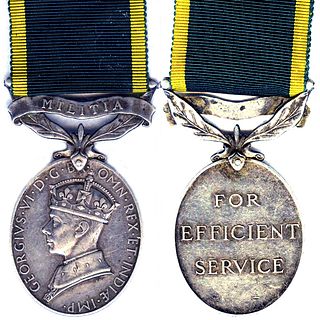
The Efficiency Medal was instituted in 1930 for award to part-time warrant officers, non-commissioned officers and men after twelve years of efficient service on the active list of the Militia or the Territorial Army of the United Kingdom, or of the other Auxiliary Military Forces throughout the British Empire. At the same time a clasp was instituted for award to holders of the medal upon completion of further periods of six years of efficient service.
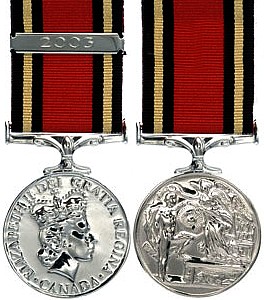
The Queen's Medal for Champion Shot is a Canadian medal instituted on 28 August 1991 to honour one member each of the Canadian Armed Forces (CF) Regular Force and either the CF Reserve Force or the Royal Canadian Mounted Police (RCMP) who obtained the highest aggregate score in stages one and two of the Queen's Medal Competition. It replaced its British counterpart, the Queen's Medal for Champion Shots in the Military Forces, after 1992. In respect of the Canadian Regular Force, the British medal could only be won by Army members, whereas the Canadian medal can be won by members of the Canadian Forces.

The Sacrifice Medal is a decoration that was created in 2008 as a replacement for the Wound Stripe. It is awarded by the Canadian monarch, usually via his or her federal viceroy, to members of the Canadian Forces or allied forces wounded or killed in action, and to members whose death under honourable circumstances is a result of injury or disease related directly to military service.

The Elizabeth Cross is a commemorative emblem given to the recognised next of kin of members of the British Armed Forces killed in action or as a result of a terrorist attack after the Second World War. It bears the name of the current British monarch, Queen Elizabeth II.

The Queen Elizabeth II Diamond Jubilee Medal or The Queen's Diamond Jubilee Medal is a commemorative medal created in 2012 to mark the sixtieth anniversary of Elizabeth II's accession to the thrones of the Commonwealth realms. There are three versions of the medal: one issued by the United Kingdom, another by Canada, and the third for the Caribbean realms of Antigua and Barbuda, the Bahamas, Barbados, Grenada, Jamaica, Saint Kitts and Nevis, Saint Lucia, and Saint Vincent and the Grenadines. The ribbons used with the Canadian and British versions of the medal are the same, while the ribbon of the Caribbean medal differs slightly. The different iterations of the medal were presented to tens of thousands of recipients throughout the Commonwealth realms in the jubilee year.
The New Zealand Armed Forces Award is a long service decoration for Regular Force Officers of the New Zealand Defence Force. Established on 6 May 1985, the medal is presented for 15 years of unblemished service.

The Independence Medal was instituted by the State President of the Republic of Transkei to commemorate Independence on 26 October 1976. It was awarded to all ranks on the active strength of the Transkei Defence Force upon independence.
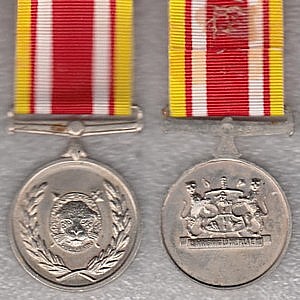
The General Service Medal was instituted by the State President of the Republic of Bophuthatswana in 1991, for award to all ranks for operational service inside Bophuthatswana.

The Naval Long Service and Good Conduct Medal (1848) is a long service medal awarded to regular members of Her Majesty's Naval Service. It was instituted by Queen Victoria to replace the Naval Long Service and Good Conduct Medal (1830), and could be awarded to other ranks and men serving in the Royal Navy and Royal Marines. Since 2016, after a number of changes in eligibility, all regular members of the Royal Navy and Royal Marines who have completed fifteen years of reckonable service can be awarded the medal.

The Royal Air Force Long Service and Good Conduct Medal is medal awarded to regular members of the Royal Air Force in recognition of long service. It was instituted by King George V in 1919, the year following the establishment of the world's first independent Air Force. At first, the medal was awarded to Regular Force non-commissioned officers and airmen of the Royal Air Force. The award criteria was later relaxed to also allow the award of the medal to officers who had served a minimum period in the ranks before being commissioned. Since 2016, it is awarded to all regular members of the RAF, including officers who had never served in the ranks.

The Queen's Medal for Champion Shots of the Air Forces was instituted in 1953, as an Air Force version of the Queen's Medal for Champion Shots in the Military Forces. One medal each can be awarded to the champion shot of annual small arms marksmanship competitions held by the Air Forces of the United Kingdom and those member countries of the British Commonwealth whose Governments desire to take part in the grant of the award.

The Medal for the Best Shot in the British Army, Infantry, was instituted by Queen Victoria in 1869 and was awarded annually from 1870 to 1882 to the best shot of the Infantry of the British Army, including the Royal Engineers and the Colonial Corps.

The Operational Service Medal Iraq and Syria or Operation Shader Medal is a British armed forces campaign medal, awarded mostly to military personnel who served in the operational area of, or in support of Operation Shader. The medal was first announced by former Defence Secretary, Sir Michael Fallon on 19 September 2017. It was first awarded, to service personnel, on 18 July 2018 in London by Defence Secretary Gavin Williamson. This Operational Service Medal is the first to be awarded to individuals who served outside of the operational area, reflecting the changing nature of warfare.
